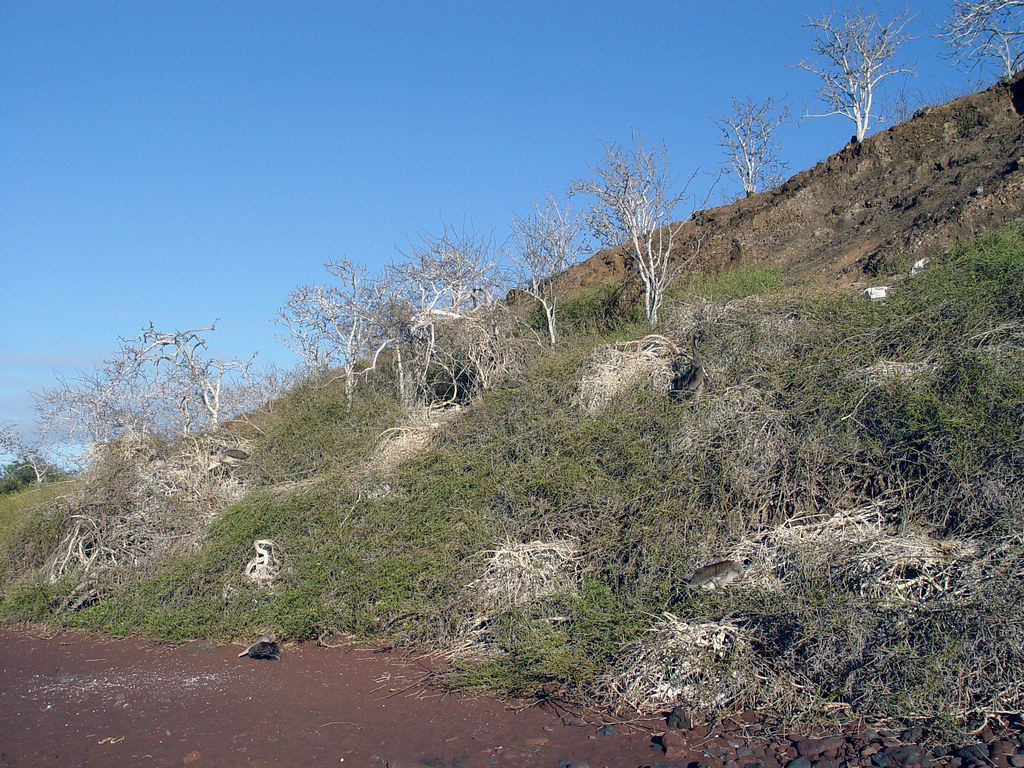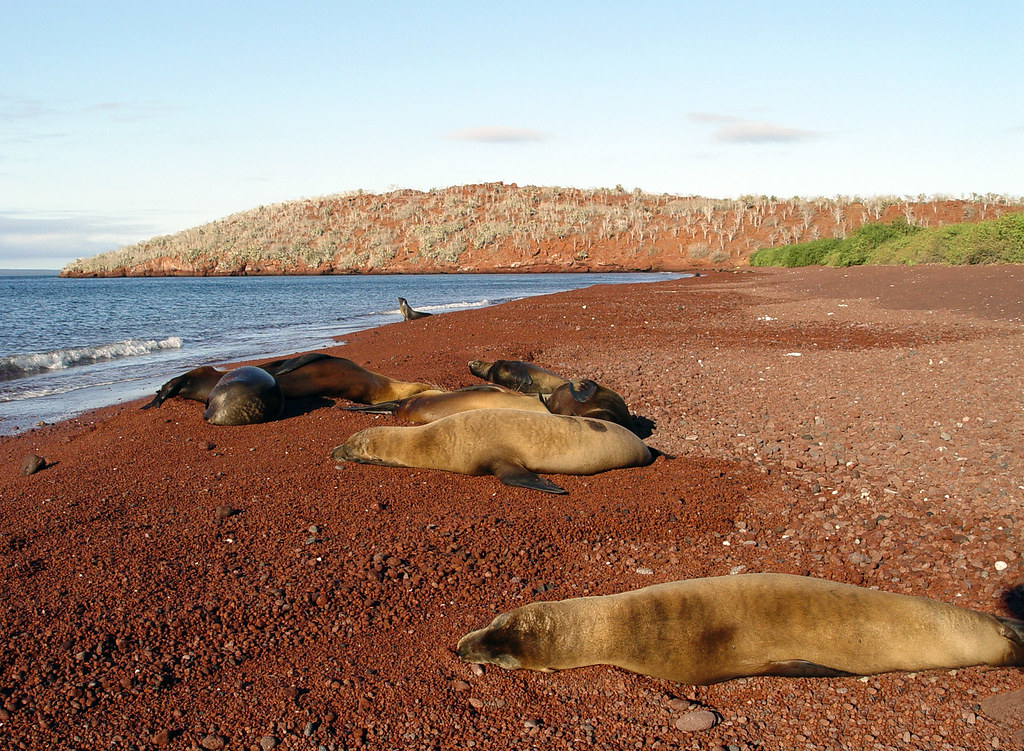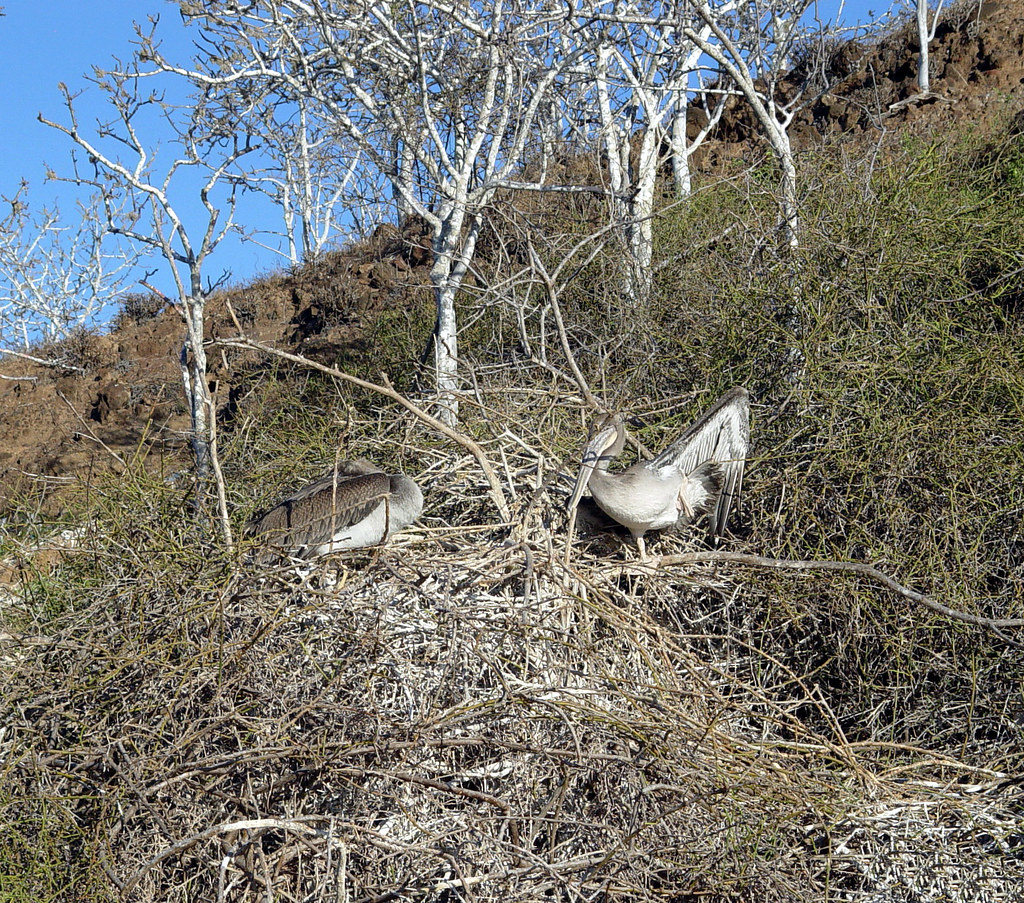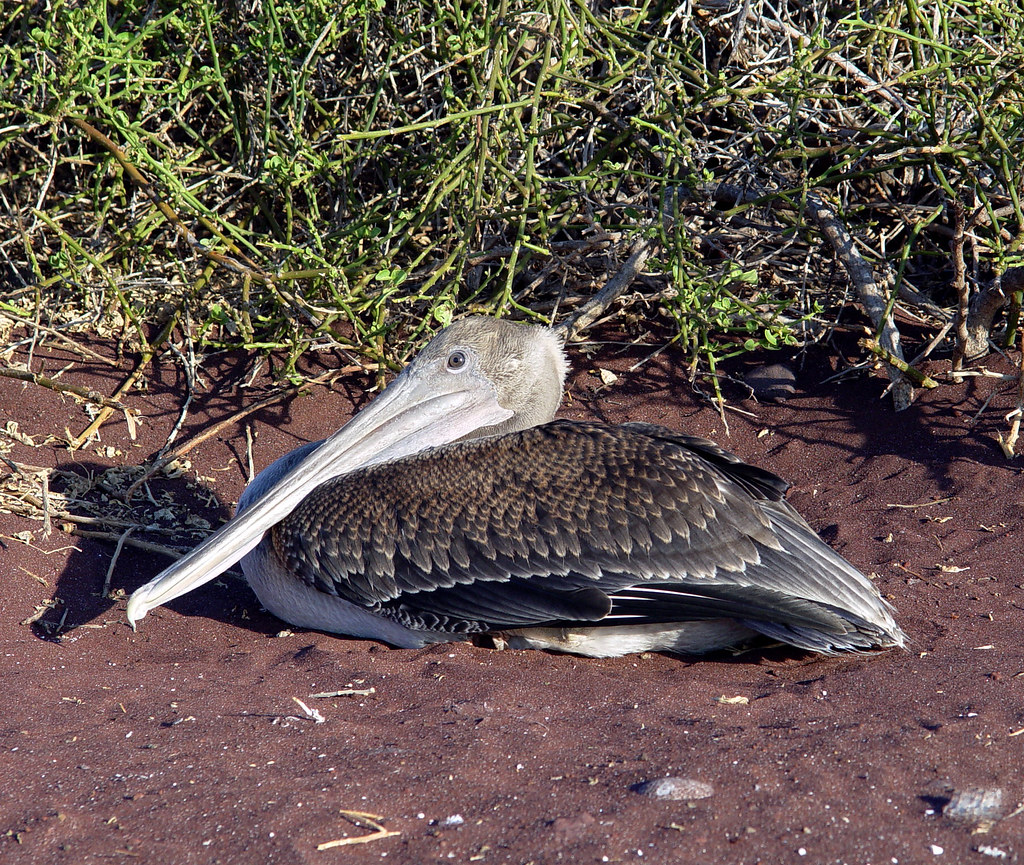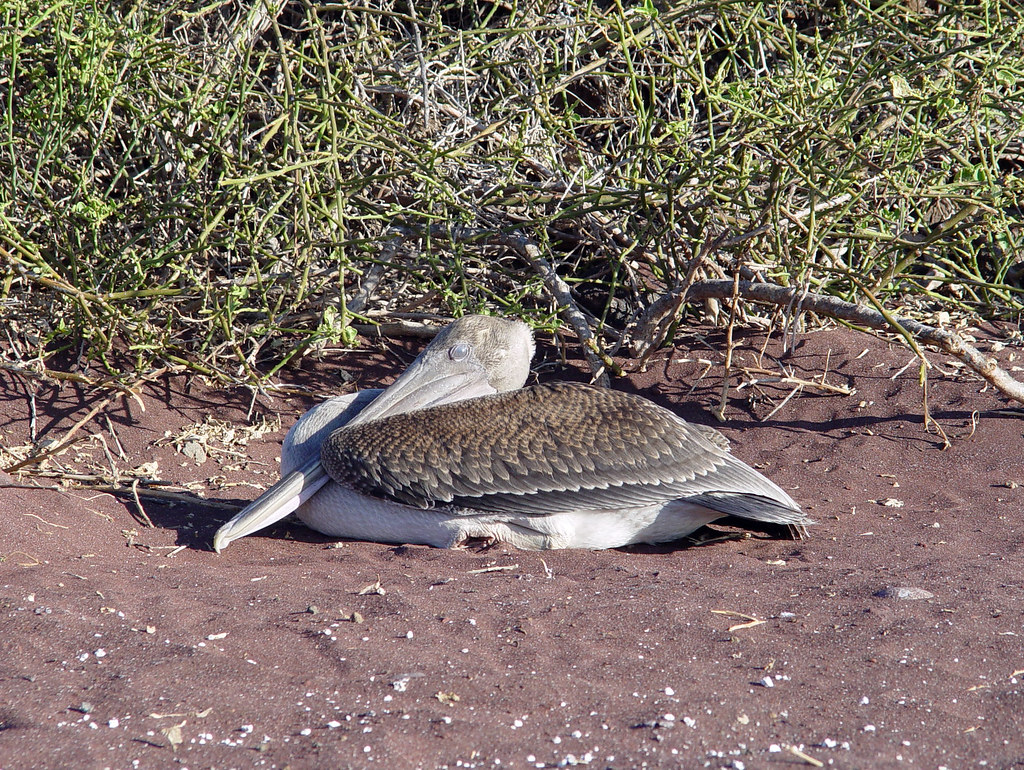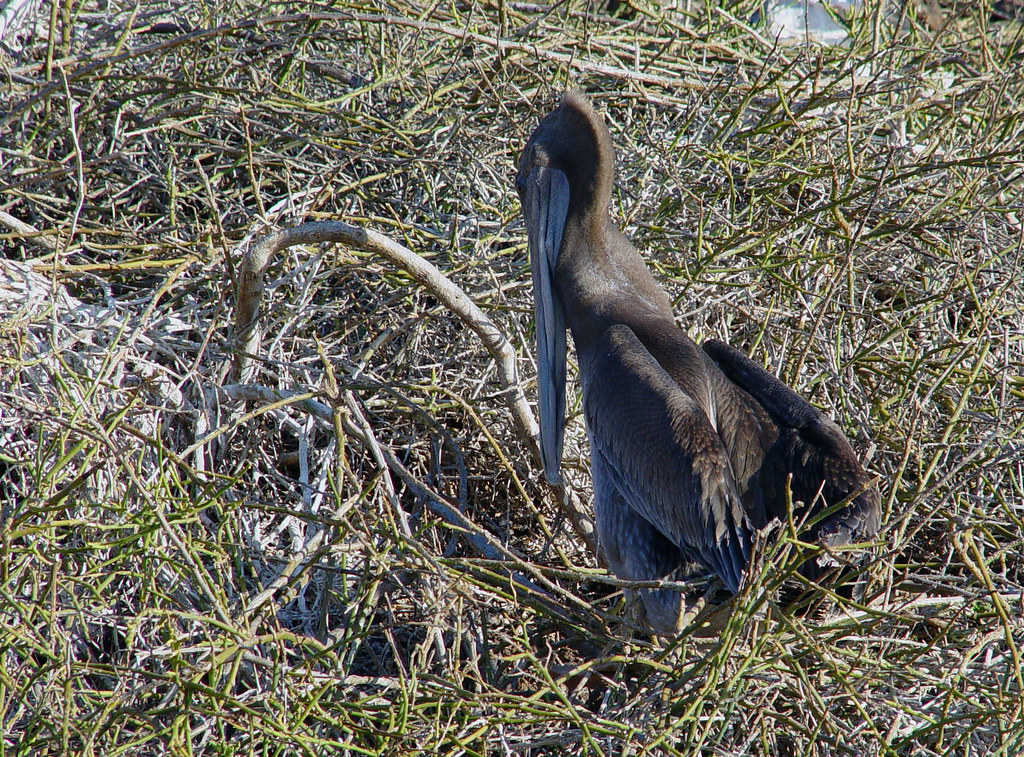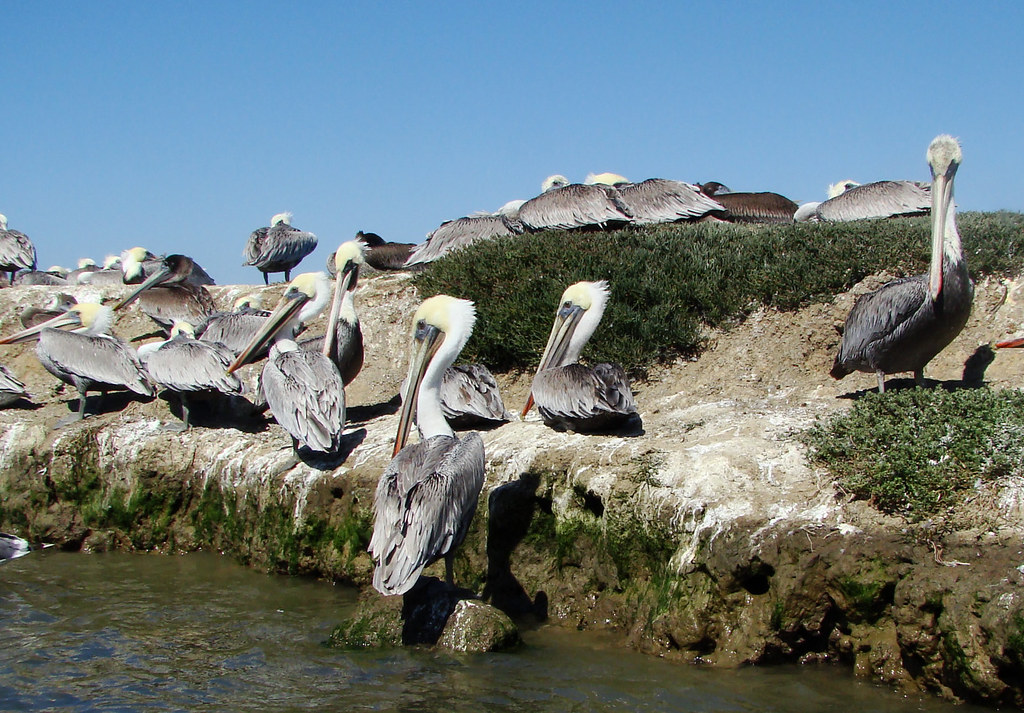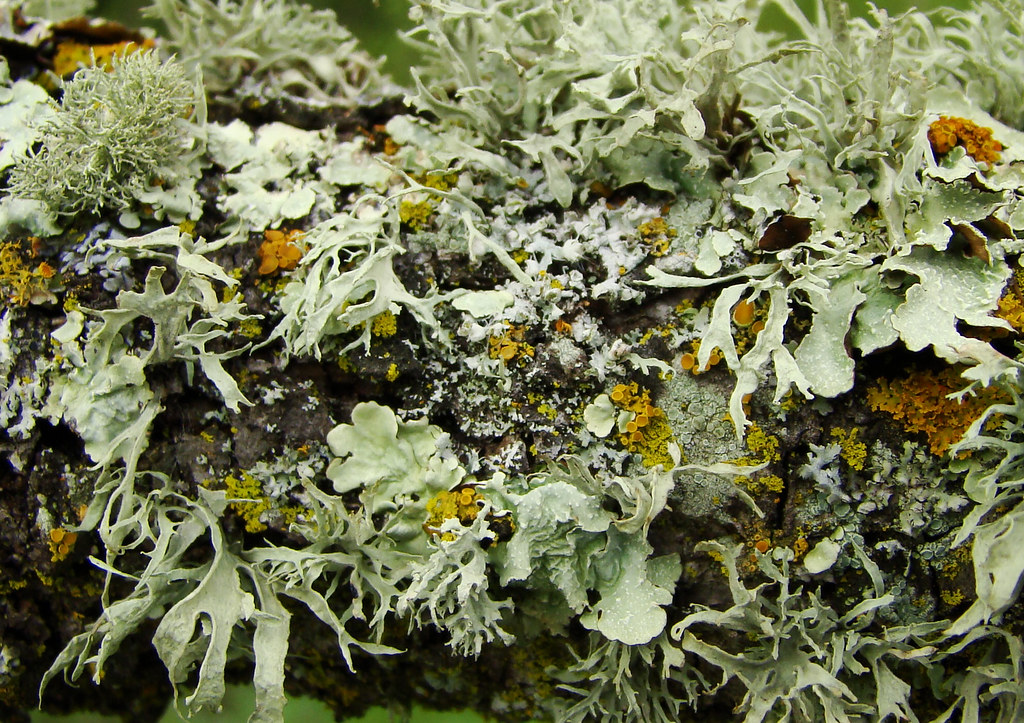Though the smallest of the pelican family, it is still an impressively large bird with an average wing-span of 6-8 feet (2-2½ meters), and weighing in at 6-12 pounds (3-5½ kg).
There are five subspecies:
P. o. californicus (California Brown Pelican)
P. o. carolinensis (Eastern Brown Pelican)
P. o. occidentalis (Caribbean Brown Pelican)
P. o. murphy (Pacific Brown Pelican)
P. o. urinator (Galápagos Brown Pelican)
Galápagos Brown Pelican
My family and I were most fortunate to see brown pelicans nesting during our trip to the Galápagos Islands in 2007. There are about a dozen nests on this beachfront hillside…
…with a million dollar view of the Pacific Ocean which they shared with the Galápagos Fur Seals:
These two nest mates got the penthouse:
As most animals we encountered in the Galápagos Islands, they were completely unperturbed by our presence. Touching was strictly forbidden but we were allowed to approach an animal provided we did not change their behavior:
They have a transparent third eyelid called the nictitating membrane:
The juveniles were brown all over. This one was drying his wings in his nest:
California Brown Pelican
Last month, I went to Carmel with my book club for our annual Fall Adventure. We went kayaking in the Elkhorn Slough and saw this flock of white-headed adults and immature all-brown pelicans quietly resting on this rock.
They didn’t seem to mind sharing the space with cormorants:
The weather was perfect for kayaking and wing-drying:


